How To Clear It Up Like a Dermatologist Blemishes 101
If you frequently experience blemishes, chances are you spend a lot of time wondering what’s causing your blemishes. Unfortunately, misconceptions and myths about blemishes are common. We aim to clear those misconceptions up and help you learn more about what can contribute to blemishes whilst also learning how to effectively tackle blemishes in this guide.
Blemish Facts & Fiction
Studies show that up to 85% of people experience blemishes at some point in their lives.1 Despite its prevalence, there are many misconceptions about what can cause blemishes and how to manage them. Making matters (seemingly) more confusing is that there are blemishes, including blackheads, whiteheads, and pustules. Here, we’re breaking down a few common myths about blemishes to help you better understand how to address this common skin concern.
Blemish Myth #1
Fiction: You shouldn’t moisturise if you have blemishes
If your skin is on the oilier side—as blemish-prone skin often is—you may feel that moisturising will only make it worse. In reality, moisturising is an essential part of maintaining an effective skincare routine. This remains true for all skin types, including blemish-prone skin..
Fact: Moisturising is essential in any blemish skincare routine
Skipping moisturiser can leave your skin feeling dehydrated, which, in turn, can cause it to produce excess sebum (oil) to attempt to compensate for this depletion of moisture. Ultimately, this heightened oil production can clog your pores and lead to blemishes. To help keep your skin moisturised without aggravating your blemishes, we recommend looking for lightweight, non-comedogenic moisturisers. During the day, we would suggest using a moisturiser with SPF, such as CeraVe’s AM Facial Moisturisers.
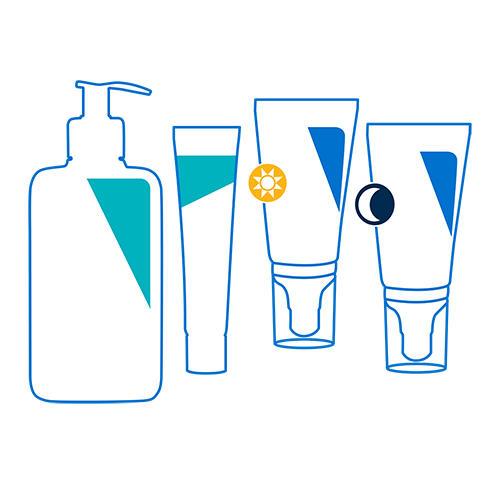
Blemish Myth #2

Fiction: You need harsh products to clear blemishes
If you have blemishes, your impulse may be to pile on as many blemish-fighting ingredients as you can in order to try to clear your skin up quickly. In reality, managing blemishes is a marathon, not a sprint—and often over-using harsh products and anti-blemish actives can result in your skin feeling dry and irritated, rather than smooth, moisturised and clear of blemishes.
Fact: Stronger products don’t necessarily mean better
When it comes to blemishes, sometimes less is more. And, contrary to popular belief, a skin-burning sensation during treatment is not a good thing. This can often leave your skin irritated and dry. However, CeraVe’s products for blemish-prone skin are developed with dermatologists to specifically to help clean and exfoliate the skin to prevent new blemishes from appearing, without disrupting the skin’s natural protective barrier, working to keep your skin both clear and moisturised.
Blemish Myth #3
Fiction: Blemishes are caused by dirty skin
Oftentimes, when people have blemishes, they assume it means their skin is dirty—so they turn to harsh cleaners and aggressive scrubs in the hopes of achieving ‘squeaky-clean’ skin. Whilst washing your face is always an essential part of a healthy skincare routine, overdoing it can actually disrupt your skin barrier and potentially worsen your blemishes.
Fact: Dirt doesn’t cause blemishes
Despite what some people may believe, dirt is not the root cause of blemishes. Blemishes can occur when your pores become clogged with impurities, such as excess sebum (oils), dead skin cells, and bacteria. To help remove excess impurities within your pores, it is generally best to gently wash your face twice daily with warm water and a non-drying cleanser for blemish-prone skin, such as CeraVe’s Blemish Control Cleanser.

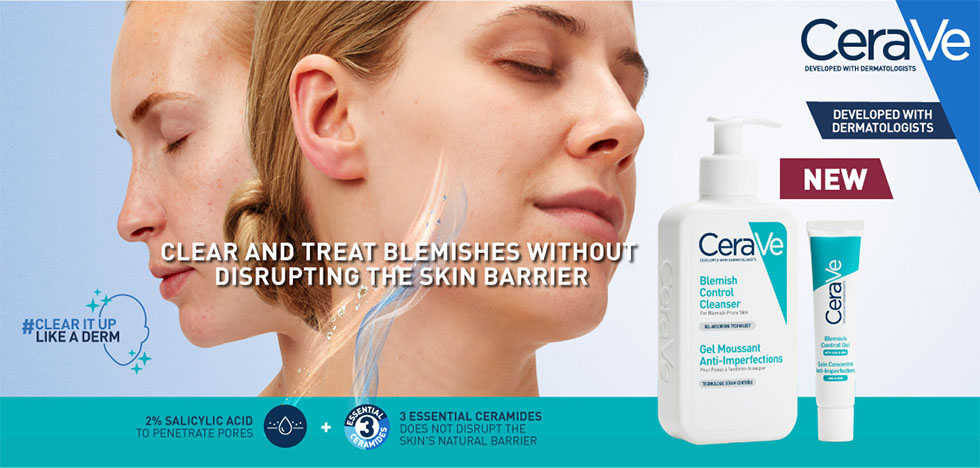
Step-By-Step Routine for Blemish-Prone Skin

Step 1:
Blemish Control CleanserBlemish control Face Wash With 2% Salicylic Acid
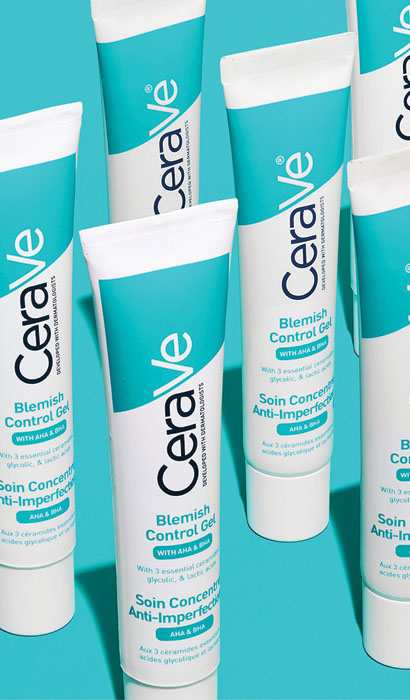
Step 2:
Blemish Control GelBlemish Treatment Gel With 2% Salicylic Acid
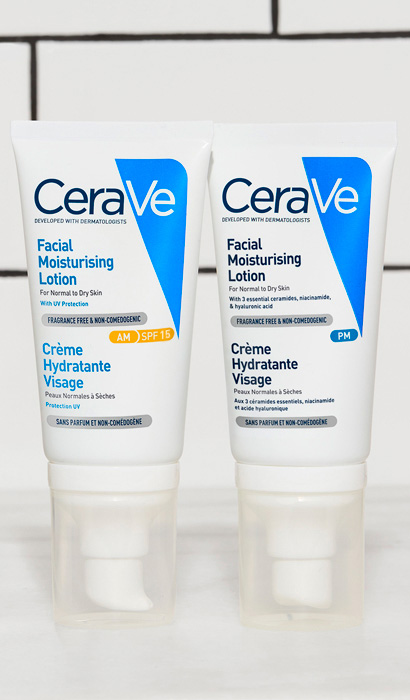
Step 3:
Facial Moisturising Lotion (AM or PM)Lightweight, non-comedogenic moisturisers for all skin types, formulated with broad-spectrum SPF 30/50 for Daytime (AM), helping to protect your skin from UVB/UVA rays, and Niacinamide for Nighttime (PM), ensuring your skin’s natural moisture is locked in within the skin’s natural barrier.
Blemish Skincare Essentials:
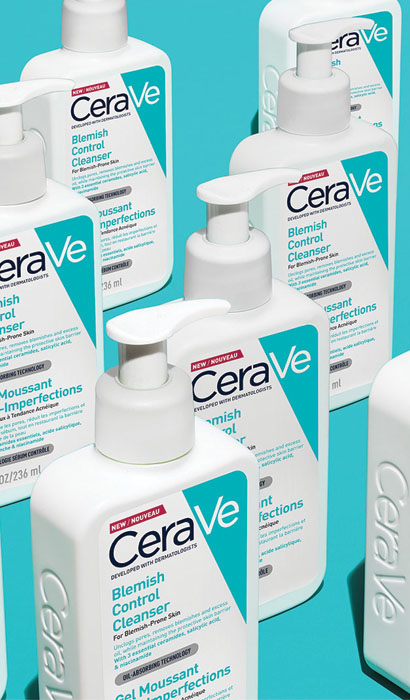
Blemish Control Cleanser
Blemish Face Wash With 2% Salicylic Acid

Blemish Control Gel
Blemish Treatment Gel With 2% Salicylic Acid, AHA’s and BHA
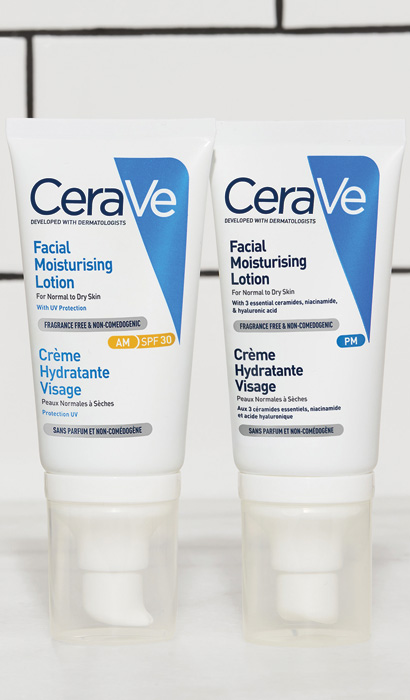
Facial Moisturising Lotion (AM or PM)
Lightweight, Non-Comedogenic Moisturisers For All Skin Types with 3 essential ceramides and hyaluronic acid.
Facts About Blemishes: Frequently Asked Questions
-
WHAT CAUSES BLEMISHES?
As we mentioned earlier, blemishes often develop when your pores become clogged with sebum (oils), dead skin cells, and (in some cases) bacteria. If you have oily skin or a family history of blemishes, you may be more likely to experience this skin concern. Other factors that can contribute to or worsen blemishes can include humid weather conditions, hormonal fluctuations, and improper skincare practices (such as picking at your skin). Additionally, using greasy, pore-clogging cosmetics can also lead to blemishes sometimes. Of course, this isn’t every possible cause of blemishes to occur.Blemishes are a common but complex skin concern and can be influenced by a very wide range of both internal and external factors as listed before.
-
CAN YOU GET BLEMISHES FROM STRESS?
It’s not your imagination: Being stressed out can impact your skin. While it is not a direct cause of blemishes, stress can act as a significant ‘barrier’ to achieving clear skin. When you’re stressed, your body releases various hormones, including androgens and cortisol—both of which can cause your skin to produce excess oil. And, as we touched upon earlier, excess oil can clog pores and therefore lead to an increase in blemishes.
-
CAN I GET BLEMISHES AS AN ADULT?
If you’re breaking out well past your teenage years, don’t worry: You’re not alone. More importantly, adult blemishes can easily be managed. If you’re struggling to get your blemishes under control as an adult, consider consulting your local healthcare professional for help.
-
WHAT INGREDIENTS ARE BEST FOR MANAGING BLEMISHES?
One of the most common ingredients in blemish-prone skincare products is Salicylic Acid. Salicylic Acid is a beta-hydroxy acid that offers gentle exfoliation while also helping to improve the appearance of any blemishes. This ingredient can be found in CeraVe’s gentle yet effective products for blemish-prone skin, such as the Blemish Control Cleanser or Gel. However, if you’re unsure which ingredients are right for you, your local healthcare professional should be able to steer you in the right direction. -
WHY DO I HAVE DARK SPOTS AFTER MY BLEMISHES HAVE FADED?
Dark spots that appear after a blemish breakout are often caused by an excess production of melanin, your skin’s natural pigment. Known as post-acne marks (or, more formally, post-inflammatory hyperpigmentation), these dark spots are particularly common amongst those with darker skin tones, and can make achieving even-looking skin feel like a challenge—especially since they often take a long time to fade.
To help with the process, consider adding CeraVe Resurfacing Retinol Serum to your nightly skincare routine. Formulated with encapsulated retinol, brightening licorice extract, and 3 Essential Ceramides, this gentle formula helps to promote a more even complexion whilst protecting your skin’s natural protective barrier.
-
DOES MESSING WITH A BLEMISH MAKE IT WORSE?
When you have a bigger blemish, it can be really tempting to pop it. But doing so may do more harm than good. Not only does popping your blemishes make you more likely to develop post-acne marks, but it can also worsen your blemishes, as the bacteria from your fingers can spread to your skin. Instead, address blemishes with a gentle treatment, such as CeraVe’s Blemish Control Gel. Apply a thin layer to clean, dry skin one to three times daily for noticeably clearer skin.
-
REFERENCES
1. “Skin Conditions By The Numbers.” American Academy of Dermatology Association, 2023.
2.Collier, Christin N. et al. “The prevalence of acne in adults 20 years and older.” Journal of the American Academy of Dermatology, 2008.